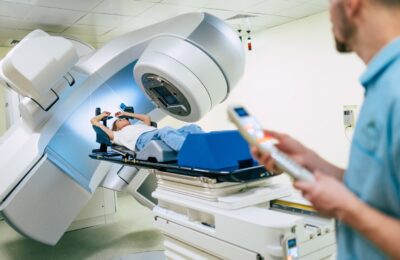
While modern dentistry has come a long way in terms of treatment and practice, there’s still room for progress in the field of microrobots. Of course, you’ve likely heard of the many significant advances in dental care over the past few decades, such as laser teeth whitening and oral implants. Still, you may not have heard much about microrobots in dentistry. Wondering what they are? Keep reading to learn more about this new technology that’s helping to advance dental care even further by automating dental treatments and processes like never before!
1. Shapeshifting Microrobots
In the past few years, scientists have developed microrobots that can change their shape to adapt to different tasks. These shapeshifting microrobots are now helpful in various industries, including general dentistry like hygiene, brushing and flossing. They work by expanding or contracting into specific sizes and forms for particular jobs. For example, a microrobot might adapt into a more complex shape, attach itself to a tooth’s surface, or contract and become a cleaning instrument inside the mouth.
Having these robots take on various shapes and purposes depending on their need reduces manufacturing costs while increasing efficiency and precision and helping you transition from a manual, oral maintenance routine to an easy single and automated robotic process.
2. Fully Programmable System to Enhance Safety and Cleanliness
A new fully programmable system that uses microrobots is in the trial stage to automate dental care. The system will be able to clean teeth and gums and remove plaque and tartar. It will also be equipped with a camera to help the dentist better view the mouth. The system is still in development, but it has the potential to revolutionize dental care. Dentists will be able to tune the motions of the robot according to each patient’s individual needs and part of the mouth that needs treatment
Patients more prone to dry mouth can request shorter cleaning sessions, while those with saliva production issues can opt for longer ones. And because all actions occur inside the patient’s mouth instead of in open surgery, there’s no risk of cross-contamination or infection from other patients—an important safety measure for people with weakened immune systems or pre-existing conditions like HIV or diabetes.
3. Customizable Nature of The Micro Robotic System
The micro-robotic system’s customizable and modular nature means it can adapt to different tasks and procedures. That already benefits dental care, as the system can work for various functions, from teeth cleaning to cavity filling. Due to this versatility, the future of dentistry is brighter than the whitest smile as more and more applications for microrobots gain momentum. Dentists can make the antimicrobial bristles gentle enough for a delicate and sensitive clinical environment while working effectively.
The microrobots can also adapt to each patient’s unique oral shape and size. That makes them friendly to the patient’s mouth. The multifunctional properties of these bots also allow them to change shape or size depending on the task at hand. They can effectively go into small spaces where other brushes would not fit – thereby solving one of the most common problems with traditional dental care: cavities.
4. Microrobots That Could Effectively Eliminate Biofilms
In the not too distant future, microrobots may be able to quickly and effectively eliminate biofilms. Biofilms are sticky communities of bacteria that are often resistant to antibiotics. They can cause several problems, including gum disease, cavities, and bad breath. The tiny robots would work by breaking up the biofilm and killing the bacteria.
That would be a significant breakthrough in dental care, as it would help to prevent and treat a wide variety of oral health problems. The shapeshifting microrobots using iron oxide nanoparticles can clear any detectable pathogens within minutes. The new form of treatment could save dentists thousands of hours per year and patients millions of dollars on dental visits.
Conclusion
As micro-robots become more prevalent in dental care, more people will become more comfortable visiting a dental clinic. The micro-robots can help automate various tasks and procedures, leading to increased efficiency and accuracy in dental care. Additionally, micro-robots could potentially improve patient safety by reducing the risk of human error. The ability of these microrobots to adapt delicate configurations and release antimicrobials on the exact points of infection also makes them a valuable tool for treating periodontal disease. Future innovations in this field will be exciting to watch as they progress towards achieving the ultimate goal: Automated dentistry!














